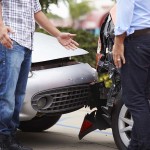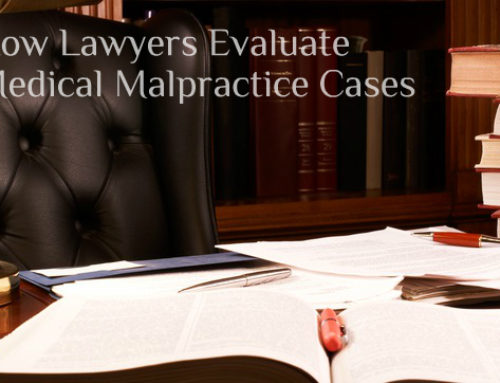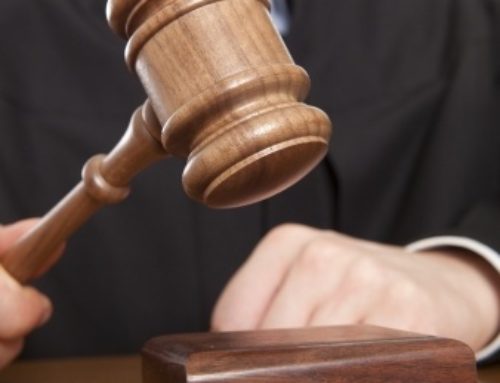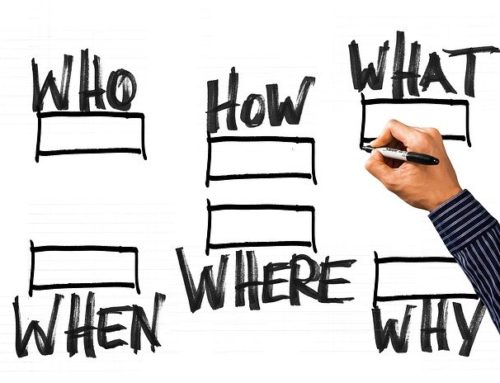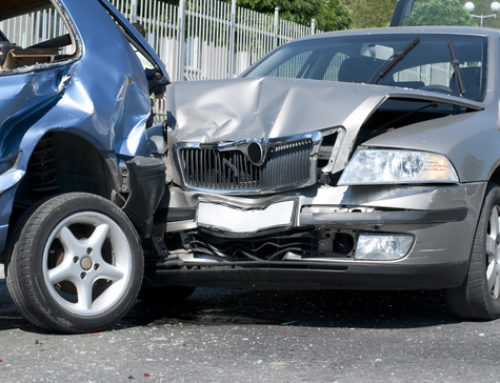It’s hard to miss the billboards and advertisements popping up out there about the dangers of texting and driving. A number of organizations are campaigning to increase awareness and do something to stop the impact cell phone use has on drivers.
What Is Distracted Driving?
Most of us have come to think of distracted driving specifically as using the cell phone while driving a car. Although cell phones are the biggest cause of distractions by far, distracted driving occurs when the driver takes their attention off the road and onto another activity for any length of time. Just reaching across the seat for your phone is all it takes to have a crash.
Three Types of Distractions
All distractions are the same, but they all produce a similar result. The National Highway Traffic Safety Administration (NHTSA) recognizes three types of distractions.
- Visual Tasks, like looking at a passenger or the GPS screen.
- Manual Tasks, which require the use of the driver’s hand, like reaching for a drink, getting their cell phone, or texting.
- Cognitive Tasks, which require the driver to focus on something else other than their driving.
Texting and driving require all three. The driver reaches to get their cell phone and uses their hands to manually text. They have their eyes on the phone and then on the screen. Finally, they have to think about the message they send and the response they receive.
Any type of electronics can cause distracted driving. Drivers often change the CDs in their player, check out their GPS, or try to find a different radio station. The only threat from the cell phone isn’t texting and driving, either. Talking on the phone, checking your email, chatting on social media, or taking a selfie to send to your friends are all types of distracted driving.
It seems harmless enough, just taking a few seconds away from your driving. Sending a text takes an average of 5 seconds. What can happen in 5 seconds? If you are driving at 55 MPH, that’s how long it takes you to drive the length of a football field. It’s more than enough time to veer into another lane, run off the side of the road, or crash into another vehicle or other object. In fact, it takes only 3 seconds of not paying attention to the road for a driver to cause a crash.
The concept that nothing serious can happen in a few seconds is what makes distracted driving so dangerous. It’s the false belief that the driver has everything under control. Any time you aren’t looking at the road and thinking about your driving, you aren’t in control of your vehicle. The biggest reason that driving distracted is so dangerous is that the drivers doing it don’t think it is.
The popularity of cell phones has led to dangers on the road that result in thousands of deaths each year. Teens are the most vulnerable, but drivers of any age are at risk of being seriously injured or killed. The statistics prove that it is a growing problem and that it has a serious impact on everyone.
– Distracted driving accounts for about 25% of all vehicle accident fatalities
– Driver distraction accounts for over 58% of teen crashes
– Nine people get killed daily in this country due to crashes involving distracted drivers
– More teens die in car crashes in the US than from any other cause
– Those between the ages of 16 and 19 years of age are three times more likely to have a fatal car crash than any other age group
– More than 80% of drivers of all ages admit to engaging in dangerous behavior while driving, including steering with their foot, painting their fingernails, applying makeup, shaving, or changing clothes.
– About 660,000 drivers use their cell phones while driving during the daytime.
– Eleven teens die each day due to texting and driving.
These are all frightening statistics, but no more so than the number of drivers who recognize the dangers and still use their cell phones while behind the wheel. An amazing 94% of teens acknowledge the dangers while 35% admit to doing it anyway. This may be due, at least in part, to a teen’s feelings of invincibility. It isn’t unusual for teens to feel like nothing can hurt them. But there’s also the fact that most teens do it all the time and don’t get caught. If there’s no accountability, they aren’t going to stop.
Texting While Driving: The New DUI
In the past, parents biggest worry was that their teens would drink while driving. The good news is that drinking and driving among teens is down over 50% over the span of the last 20 years. The bad news is that texting and driving has replaced DUI with even deadlier consequences. According to some surveys, teens believe that drinking and driving is more dangerous than texting while driving.
Teens often have more confidence in their driving skills than their level of experience supports. On top of that, even the most experienced driver can’t drive safely when their eyes and their focus aren’t on the road.
Regardless of what the distraction is, the risk of any kind of distracted driving is the same. The reason texting and driving has taken the lead is that it is a common practice of our modern culture. Nearly everyone has a cell phone. It’s become an addiction to people of all ages to talk, text, play games, and search for information on their phones. The danger is when they don’t realize they can’t do two things at one time.
Why Distracted Driving Matters to Everybody
You’ve probably experienced the “zombie” look that drivers often have while talking or texting on their cell phone. They come at you until you have to dodge them to avoid a crash. Even after a near miss, they don’t seem to realize that there was ever a problem.
At the same time the number of cell phones grew in society, so has the number of drivers. There’s more traffic and more distracted drivers on the road than ever before. When one of them causes a crash that results in serious injury, they are liable for the damages. In many cases, the distracted driver is the one who loses their life.
You never know when a distracted driver will cross the lane, run a traffic light, or rear-end you. Every driver on the road is a moving target. If you have a teenager, don’t assume they know the risks. Talk to them about the dangers of texting and driving. Draw up a contract and make them sign it. Make the punishment for breaking the contract clear.
What States Are Doing to Address the Problem of Texting and Driving
More states are enacting laws related to cell phone use. Currently, no state bans all use of their cell phone for all drivers. But 38 states and Washington D.C. ban cell phone use by novice or teen drivers. The laws against texting and driving extend to 47 states, Washington D.C., Puerto Rico, Guam, and the U.S. Virgin Islands.
Laws haven’t had a significant impact on the practice, but the penalties might. Many states associate criminal charges with texting and driving when they cause a crash that results in an injury or death of another person. The penalties are serious and result in life-changing consequences. The fines are also getting higher, especially when it isn’t a driver’s first offense.
If you hit another person or vehicle while texting and driving, you are liable for the damages and injuries that result. The most common type of distracted driving has changed. The liability remains the same. A driver shouldn’t pay the cost for another driver’s mistake. With newer laws to back them, victims of distracted drivers have more rights than before.
What to Do If You Are In An Accident With a Distracted Driver
The most important thing to do is make sure you aren’t the distracted driver. Although teens are at the greatest risk, many adults are just as guilty. Set a good example for your teens. They are more likely to follow your example than do what you say.
- After any accident, the first priority is to get help for anyone who needs it. Check to see if anyone else has injuries and call for help right away.
- Call 911 regardless of the extent of the injuries or damages. You need an accident report on file in case you file a claim later on.
- Take pictures of the accident, your car, and the other driver’s. Get shots of their license plate and anything that might have contributed to the crash, such as empty alcohol containers.
- Get the name and identification of the other driver, and the name of their insurance company.
- Get the names and contact information of any witnesses.
- Record the time that the crash occurred.
- Get medical treatment. Even if your injuries seem minor, start documenting your medical care now. Keep track of all your medical expenses, diagnosis, and medical appointments.
- Contact your insurance company right away. Provide them with the at-fault driver’s insurance information.
- Contact a personal injury attorney to see if you have a case.
You probably won’t know whether the other driver was texting and driving, especially if you didn’t see the crash coming. A personal injury attorney can obtain the at-fault driver’s phone records. These records will show whether they were talking or texting on their phone at the time it happened. The attorney will obtain a subpoena after you file a personal injury claim against the at-fault driver. Proving that they were on the phone at the time the crash happened will place the liability for your damages on the other driver. These records will show the location of the driver during the crash and distinguish whether they were talking or texting.
The other driver and their insurance company will probably deny the claims. The more evidence you have collected, the more likely it is that you can prove your case.
As the victim of a texting and driving accident, some of the damages you might include in your claim are…
– Automotive Property– If your vehicle is damaged, the other driver is liable for the cost of repairs. If it is totaled, meaning it will cost more to repair it than the value of the car, they must pay for a replacement.
– Personal Property – This includes damage or loss of personal property that was in the car during the crash.
– Medical Bills – All the costs related to your treatment from the time the ambulance picks you up until you are well or healed, to the point that treatment is no longer likely to be effective. Your medical care includes everything up to that point and any future treatment you will need.
– Lost Wages – These damages include the money you were unable to earn due to the injuries you sustained in the crash.
– Out of Pocket – Any costs you have related to your injuries are recoverable damages. If you need a rental car, a wheelchair, copays for your insurance, they are out of pocket expenses.
– Pain and Suffering – Car accident victims often experience pain and suffering including post-traumatic stress disorder (PSD), depression, or loss of enjoyment of life.
– Punitive – Punitive damages aren’t always awarded. The exception is when the judge feels the accident was overly reckless, wanton, or willful. Punitive damages are awarded in addition to other types of damages as a way of punishing the at-fault person.
Texting and driving is a serious threat to everyone on the country’s roads and highways. It’s up to each individual to abide by their state’s laws regarding cell phone use while driving. It’s also up to parents of teens to explain the dangers and enforce the rules to help keep teens and other drivers safe.
If you are injured in a texting and driving accident, contact Ingerman & Horwitz right away. We are prepared to take the defendants and insurance companies to court and aggressively pursue your needs.






